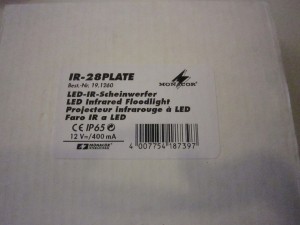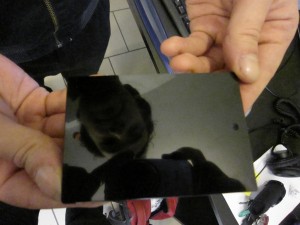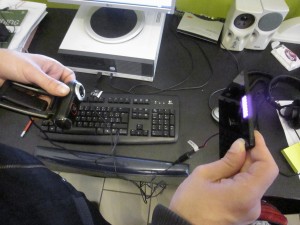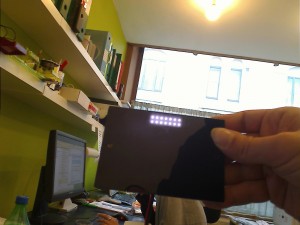A couple of days ago I was asked to do a little simple soldering task: attach a plug to provide current through an adaptor to a infrared lamp.
These are the specifications of the little lamp:
It was a matter of connecting the plus cable of the adaptor to the plus cable of the lamp – and the same goes for the minus.
But how do you test whether your lamp works? (ask a bee or a bird :-))
Because to your human eyes, the lamp looks like this, whether it is working or not:
So we had a little think – and then we remembered that camera’s do see infrared light (quite a few gamecontrollers work that way now as does your remote control.
This is an animation from that article on Wikipedia: “the infrared diode modulates at a speed corresponding to a particular function. When seen through a digital camera, the diode appears to illuminate purple light.”

First we had the webcam have a look at this floodlight:
Then our regular photocamera:
It works!
(be sure not to look too long into this light)









